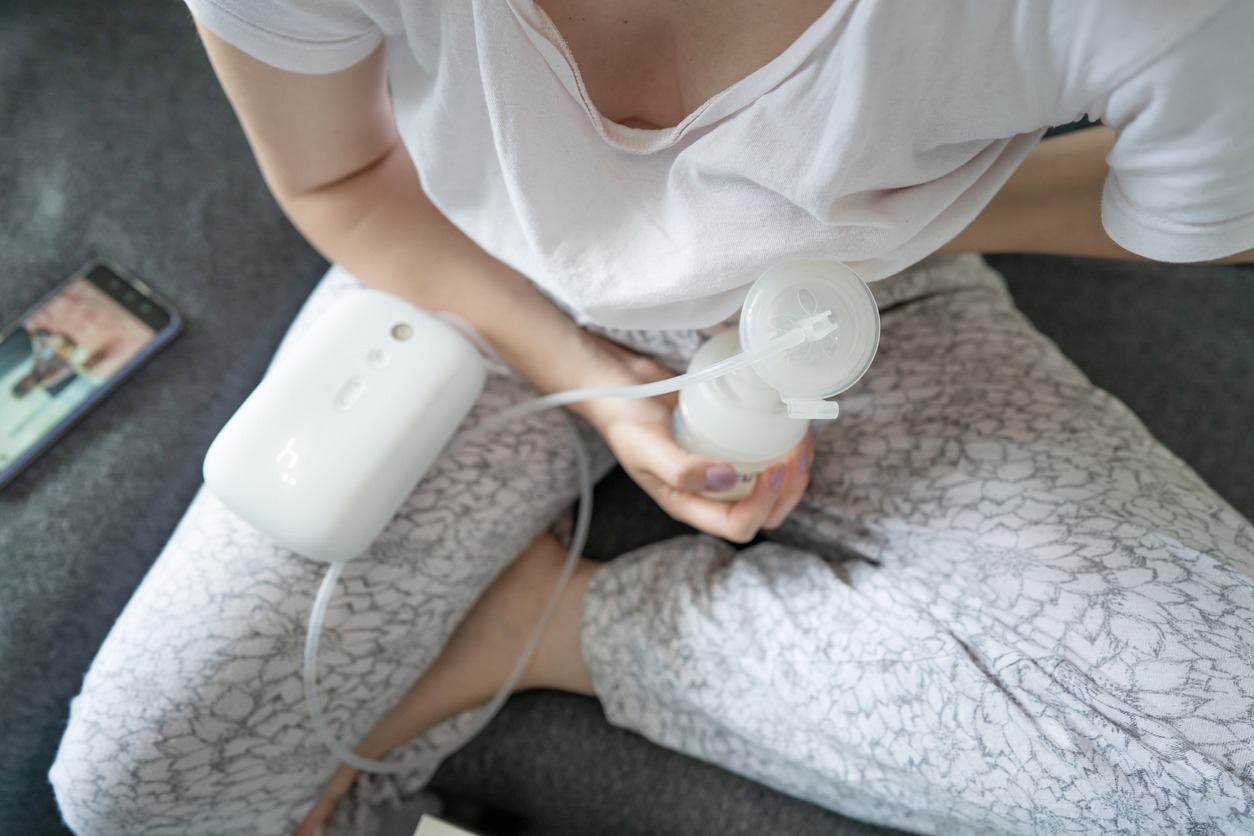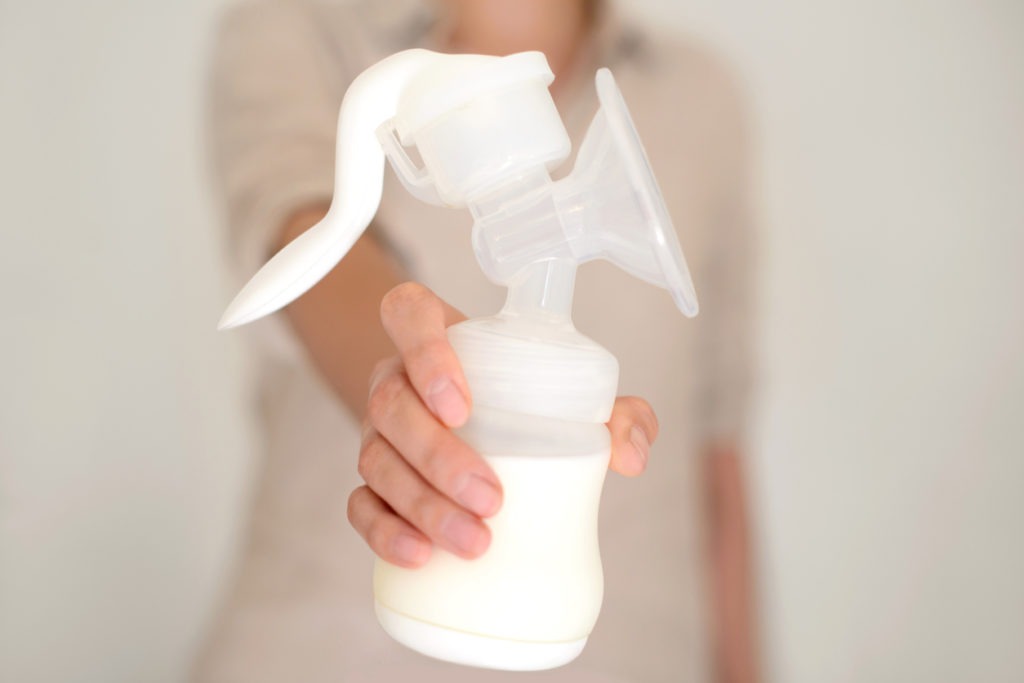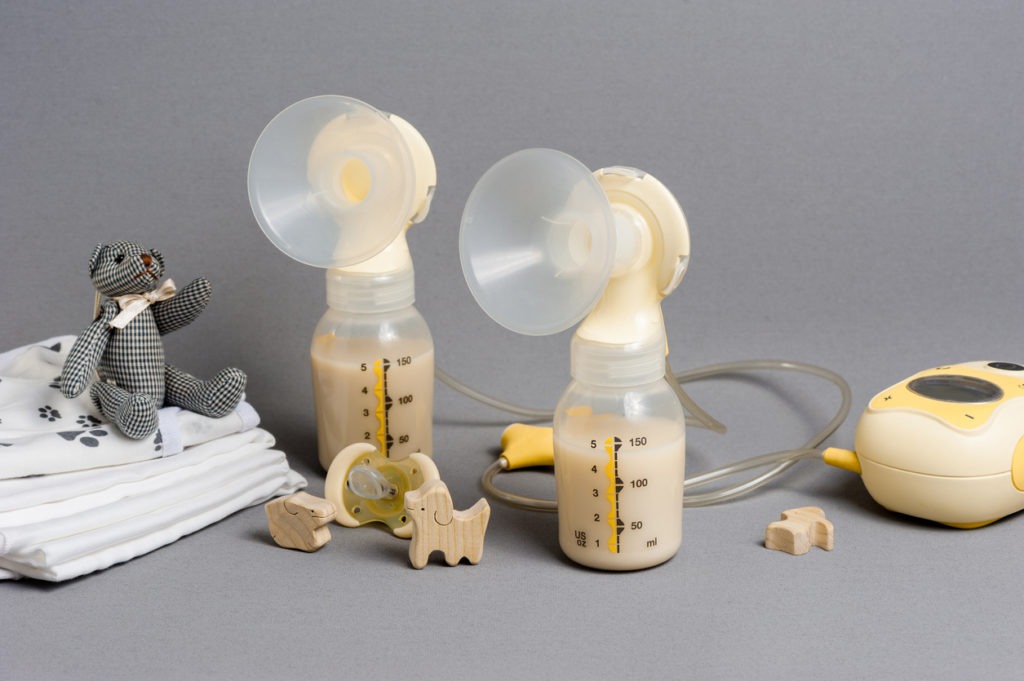If you’re a breastfeeding mom, it might take a bit to get the hang of using a breast pump. You may get frustrated to see that you can’t express as much as you’d like right away. However, you need to be patient since a breast pump won’t stimulate the same feelings in you as a baby does. But with time, your body will learn to trigger your letdown reflex as you pump, and the quantity of milk you express will increase.
Whether you plan to return to work away from home or need a break from directly feeding your baby, a breast pump is a helpful option. It’s an efficient way to maintain milk supply and provide breast milk even if you can’t be with your baby.
What are the Benefits of Pumping?
When it comes to pumping breast milk, there are several benefits to count:
- It can relieve engorgement and prevent mastitis.
- It can help you build and maintain an adequate milk supply.
- You can store breast milk so you can use it for later.
- They allow you to provide breast milk when nursing isn’t an option due to latching problems or poor supply.
- It gives your partner and other caregivers the to help you with feeding and enhance their bond with the baby.
- It can make it easier to maintain your breast pumping goals by allowing you to pump once you return to work.
- It allows you to be able to share breast milk with moms who are not able to provide breast milk for their babies.
When Should I Start Pumping?
There is no fixed time when it comes to pumping breast milk. You will and should pump breast milk when you feel it is the right time; that mostly depends on your current situation. Some new moms begin breastfeeding their newborns as soon as they are born in the hospital. If your newborn is premature, you must start pumping breast milk as soon as possible.
However, other new moms will wait until they are ready to pump breast milk or breastfeed. In some cases, newborns will shift between bottled milk and breast milk. Therefore, breast pumping depends on your baby’s special needs and what works best for you.
In the first four weeks of your baby’s life, you and your child work together to initiate and build your milk supply. If your baby is healthy and your breastfeeding sessions, you won’t need a pump to help. However, a breast pump is helpful if you need to be apart from your baby anytime. If not, enjoy this stage and be reassured that even if you plan to pump regularly, you don’t need to train your body to express milk in the first few weeks.
If the baby is unable to feed directly in the breast because the baby is premature, has special needs, or is separated from you for any reason, start pumping breast milk as soon as you can to secure a supply for your baby. Research shows that expressing within the first few hours helps moms produce a higher volume of milk in the early days and weeks, giving their babies the best chance of being exclusively fed on breast milk. But if your baby is born with no complications, it’s best to wait to establish your milk supply before pumping.
If you are employed somewhere and have to work, it is suggested that you start pumping milk at least 2 or 3 weeks before your leave ends so that you get the hang of it.
Types of Breast Pumps and How to Use Them
There are many different types of breast pumps: manual, single or double electric, hands-free, and hospital-grade. The most common types of breast pumps include manual and electric, and here’s how to use them:
1. Manual
You can only pump one breast at a time using a manual pump. They can help quickly relieve engorgement or act as a backup pump if your electric pump fails for some reason.
To use a manual breast pump, position the flange (the cone-like piece that goes into the breast) and put the nipple in the center. Squeeze the bulb or lever so that the flange seals to the breast and creates pressure to “suck” milk out of the nipple.
Continue pumping for 10-20 minutes until the milk stops flowing. Then, switch to the other breast.
2. Electric
If you are using an electric pump (single or double breast), here’s what you need to do.
- Center the nipples in the flanges, then turn the pump on. Lean forward slightly to position.
- Start the pump at a slow speed and low suction to simulate how a baby sucks. After a few minutes, you will have a letdown.
- Stop the pump for a minute and massage the breast from the armpit to the nipple. (Alternatively, use a warm compress). This will help give the breast a break and increase the milk supply.
- Pump for a few more minutes, then store the milk. Remember, it’s essential to pump for 15 minutes. Even if the milk stops flowing, stimulate the breast to maintain the milk supply.
How to Prepare for a Pumping Session
To prepare yourself for a pumping session, here’s what you need to do:
1. Read instructions and clean the pump
Before you start pumping for the first time, read the instructions that came with the pump. Wash the removable parts and the collection bottles with warm, soapy water.
2. Gather your supplies
Start by gathering supplies like milk bags, muslin cloth to soak up drips, and a glass of water (pumping may make you thirsty.) To avoid interruptions, have everything you may need. Besides water, you may also want a snack, your phone, or a TV remote to pass the time when pumping. Breast pumping bras can also help keep your hands free, making it easier to operate the controls and do other things while you express milk.
3. Observe proper hygiene
Then, wash your hands before and after breast pumping. Clean any parts of the pump that have been in contact with your milk and baby’s mouth. Sanitize them after cleaning at least once a day, and ensure all the pieces are completely dry before storing them in a container or a bag.
4. Make yourself comfortable
Before beginning to pump breast milk, you must relax. Find a quiet and comfortable area to sit and relax as much as possible. Being relaxed and at ease is essential for releasing oxytocin, a hormone that stimulates your letdown reflex. Distractions and discomfort can hamper your pumping, so choose somewhere comfortable and private. Make sure your arms and back are well-supported as you pump.
You can play some soothing music, try visualization techniques, practice deep breathing, or have your partner massage your back and shoulders. This can help you express more milk if you’re having trouble.
4. Jumpstart your letdown
You can warm your breasts before pumping by applying a warm compress on them before expressing has been shown to help stimulate milk flow and increase letdown. You may also opt to massage your breasts before and during pumping to achieve the same results.
Having some skin-to-skin contact with your baby before and during pumping can help increase your milk too. It’s because the warmth and touch of your baby’s skin against yours release oxytocin. Some moms prefer to express if they feed their baby from the other breast while they pump at the other side because of the extra stimulation.
5. Do not start at the highest suction level
Make sure not to begin with the highest level of suction, as it may be uncomfortable. Start slowly, then gradually increase the level of suction to where you feel the most comfortable while giving you the most letdown.
How Often Should I Pump, and for How Long?
The frequency of pumping breast milk depends on how you intend to build the milk supply. If you intend to build the milk supply, then it is suggested that you pump the milk between nursing sessions. However, if you are pumping milk at work to replace the feedings you have missed or are missing, make sure that you align them with your baby’s feeding schedule so that the milk supply is built strong.
Express milk for at least 15-20 minutes to get a good amount of milk. Don’t worry if you don’t collect much at first – regular extra suction must soon stimulate the breasts to produce more milk.
Some moms find that pumping an hour after a feed gives the greatest yield, while others prefer to pump after every second feed. Try expressing yourself at different times to see what works best for you. And once you find the perfect timing, stick with it so your body gets used to your breast pump use and the extra demand on your milk supply.
You may be tempted to extend the time between milk expressions to collect more milk. But if you wait until your breasts are full, one pumping session won’t drain them well – the key is pumping regularly and frequently.
How to Store Breast Milk?
While pumping is one thing, storing breast milk is another. Most breast pumping machines come with containers that allow you to collect and store breast milk in containers. Whereas others allow you to collect the milk in standard feeding bottles. You can also collect breast milk in plastic bags. However, make sure to use the right type of plastic bags – there are breast milk bags specially designed to store breast milk. In addition to that, you can store breast milk for up to four days and in the freezer for around 12 months. Remember to label each container and use the oldest milk first.



